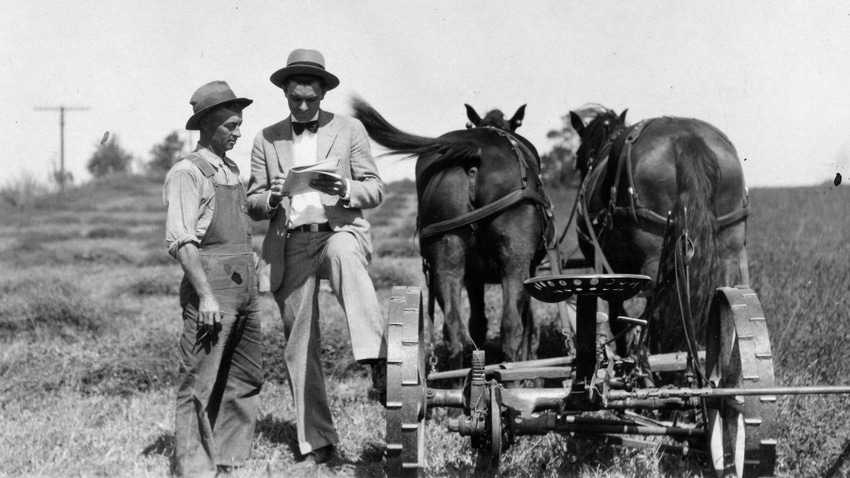
Does the Extension Service still provide a valuable service for Indiana farm families? Rumblings we’ve heard on both sides of that issue indicate it could be an interesting debate.
What’s not debatable is that in the late 1920s, ’30s and through the ’40s, farmers and Indiana agriculture were challenged by historic events, including the Great Depression and World War II. It’s also clear that during those difficult decades, Purdue Extension, through county Extension agents, played a critical role in helping farmers meet those challenges.
Fred Whitford, director of Purdue Pesticide Programs, recently completed his latest book, “Planting the Seeds of Hope: Indiana County Extension Agents During the Great Depression and World War II.”
Must read
The original pictures, flyers and information pieces displayed in the book are fascinating. They document unprecedented times when Extension, government and farmers cooperated to feed the world and turn back tyranny. New ways of farming and growing more food were appearing, and Extension agents helped teach farmers how to use these technologies and practices.
Whitford takes us back to difficult days and helps us relive what it might have been like to work with farmers as an Extension agent. Here are three examples:
Gardening to survive. During the Great Depression, Extension agents didn’t just answer questions for hobby gardeners. They provided advice so families could raise enough food to survive. In fact, Whitford cites this example on Page 40: “In 1933, agent Ralph Maggart worked with the Carroll County township trustees to create a list of people from each community who could not afford to buy seeds.” The state paid for seed and seed potatoes, and officials estimated that every $100 in free seed generated $1,000 in vegetables.
Bringing lights to the country. Whitford sums up Purdue Extension’s contribution to bringing electricity to rural Indiana this way on Page 135: “The work toward establishing REMCs in the 1930s would be remembered by agents as life-changing for people living in rural areas of the state. Purdue Extension played a major role in that change by helping to deliver power and education to the agricultural community, which ultimately changed how its people worked, lived and played.”
In 1939, Boone County agent Clarence Whistler reported that farmers purchased 101 electric brooders, partly thanks to a 33% discount from O.K. Hatchery, working with the local rural electric membership corporation (REMC).
Helping the war effort. Extension agents contributed in many ways during World War II, including teaching GI bill courses after the war. During the war years, Whitford explains on Page 425 that Extension agents often served as an intermediary between farm boys considered for the draft and the Selective Service Board.
John Tylie, the Miami County agent, left behind a sample letter and information forms that Whitford included in his book. Tylie’s sample letter asked a prospective draftee about pertinent farm information, such as how many crops and livestock were raised on his farm. The draft board would then decide if he was more important to agriculture than the military.
The hardcover edition is available from Purdue University Press. It includes 700 pages with over 200 illustrations. List price is $49.99.
Read more about:
ExtensionAbout the Author(s)
You May Also Like




